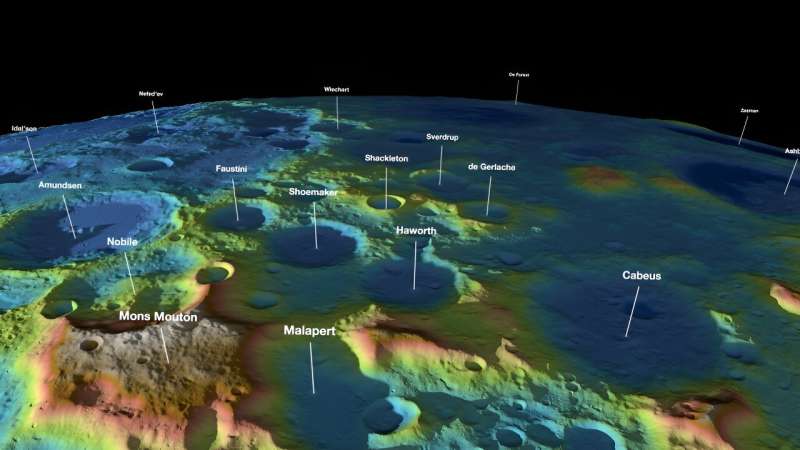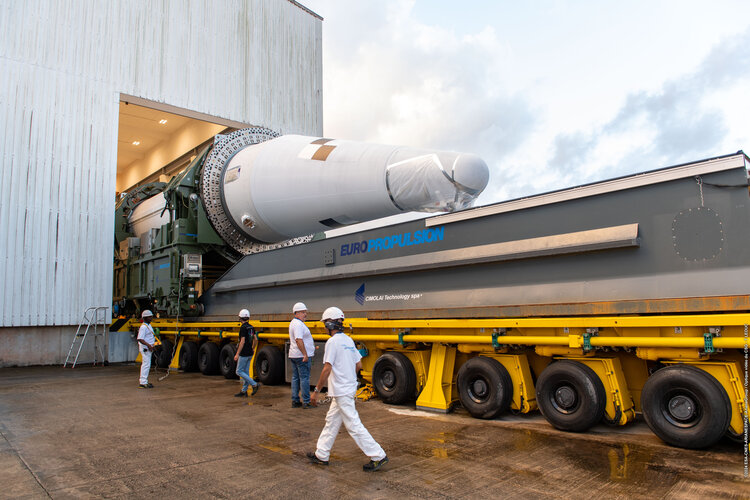Study shows bed rest simulating space affects human gene rhythms
Wednesday, 20 March 2024 17:28 A study by the University of Surrey has revealed that simulated microgravity conditions, akin to those experienced by astronauts, cause disruptions in the natural rhythms of gene expression in humans. This simulation was achieved through 60 days of bed rest, providing insights into the molecular changes that occur in space.
The study underscores the effects of microgravity on human physiol
A study by the University of Surrey has revealed that simulated microgravity conditions, akin to those experienced by astronauts, cause disruptions in the natural rhythms of gene expression in humans. This simulation was achieved through 60 days of bed rest, providing insights into the molecular changes that occur in space.
The study underscores the effects of microgravity on human physiol NASA, industry improve lidars for exploration, science
Wednesday, 20 March 2024 16:50
NASA engineers will test a suite of new laser technologies from an aircraft this summer for Earth science remote sensing. Called "lidar," the instruments could also be used to improve models of the moon's shape and aid the search for Artemis landing sites.
Similar to sonar, but using light instead of sound, lidars calculate distances by timing how long a laser beam takes to reflect off a surface and return to an instrument. Multiple pings from the laser can provide the relative speed and even 3D image of a target.
Hiring booms at SpaceX and Blue Origin making it hard for NASA to attract talent
Wednesday, 20 March 2024 16:40
SpaceX and Blue Origin LLC are competing to launch satellites and take humans to the moon. They are also paying big salaries to hire so many young and tireless engineers that old-line aerospace employers like Boeing Co. and NASA are finding it harder to fill positions.
Most aerospace students really covet jobs at SpaceX and Blue Origin, recruiters say. The private firms are run by two of the three richest men in the world, Elon Musk and Jeff Bezos, who ultimately imagine people living and working in Earth's orbit and on the surface of Mars.
Their private firms also often pay more than established space operations. SpaceX is currently listing starting aerospace engineer positions at $95,000 to $115,000 a year.
NASA, which follows the federal government's General Schedule pay scales, offers starting salaries along a range that starts at $54,557 for engineers with bachelor's degrees, $66,731 for master's degrees and $73,038 for doctorates at the Kennedy Space Center in Florida.
Helping SpaceX or Blue Origin build towering rockets, orbiting labs or moon landers can also mean serving at the whims of mercurial executives.
Swissto12 expanding small GEO satellite production facilities
Wednesday, 20 March 2024 16:35

Space-connected ambulances improve patient care
Wednesday, 20 March 2024 13:55
Satellites are helping to improve at-home patient care for those living in remote areas of the UK. ESA and the UK Space Agency (UKSA) are working with the UK’s National Health Service (NHS) to trial the Digital Ambulance of the Future project, which enables paramedics to stay connected to vital patient data, support and resources as they serve people in remote areas. The ultimate aim is to improve patient care and reduce unnecessary hospital admissions.
Lockheed Martin eyes growth in satellite business through partnerships
Wednesday, 20 March 2024 12:00

ESA awards three contracts for satellite navigation missions
Wednesday, 20 March 2024 10:03

First booster for Ariane 6 ready
Wednesday, 20 March 2024 07:56 Image:
First booster for Ariane 6 ready
Image:
First booster for Ariane 6 ready China launches Queqiao-2 relay satellite to support moon missions
Wednesday, 20 March 2024 00:20

Leonid Capital Partners Invests $6.25 Million in Space Propulsion Innovator Phase Four
Tuesday, 19 March 2024 20:43 Leonid Capital Partners, an investment firm specializing in high-growth tech ventures in the National Security sector, today unveiled a $6.25 million investment in Phase Four, a pioneering company at the forefront of developing propulsion technologies for future space vehicles. This financial injection underlines Leonid Capital Partners' commitment to advancing the next generation of space explo
Leonid Capital Partners, an investment firm specializing in high-growth tech ventures in the National Security sector, today unveiled a $6.25 million investment in Phase Four, a pioneering company at the forefront of developing propulsion technologies for future space vehicles. This financial injection underlines Leonid Capital Partners' commitment to advancing the next generation of space explo Revolutionary Laser Technology Shapes the Future of Space Exploration
Tuesday, 19 March 2024 20:43 A groundbreaking laser beam, reminiscent of a light sabre, is making waves in technological advancements through its innovative guidance via a hair-thin water jet, mirroring the function of traditional fibre optics.
The water jet's significant 'processing depth' facilitates the parallel slicing of larger specimens, simultaneously providing continuous cooling to the cut zone and the efficie
A groundbreaking laser beam, reminiscent of a light sabre, is making waves in technological advancements through its innovative guidance via a hair-thin water jet, mirroring the function of traditional fibre optics.
The water jet's significant 'processing depth' facilitates the parallel slicing of larger specimens, simultaneously providing continuous cooling to the cut zone and the efficie Euclid's Mission to Clear Vision: Innovative De-Icing Operations Commence
Tuesday, 19 March 2024 20:43 In a pioneering step towards maintaining the integrity of its mission, Euclid teams across Europe have embarked on a critical operation to remove thin layers of water ice affecting the spacecraft's optics. This ice, measuring just a few nanometers in thickness, has started to slightly diminish Euclid's ability to capture the universe's dark mysteries with its unparalleled precision. The success
In a pioneering step towards maintaining the integrity of its mission, Euclid teams across Europe have embarked on a critical operation to remove thin layers of water ice affecting the spacecraft's optics. This ice, measuring just a few nanometers in thickness, has started to slightly diminish Euclid's ability to capture the universe's dark mysteries with its unparalleled precision. The success QuickLogic and Zero-Error Systems radiation-resistant eFPGA IP for space
Tuesday, 19 March 2024 20:43 QuickLogic Corporation (NASDAQ: QUIK), specializing in embedded FPGA (eFPGA) IP, ruggedized FPGAs, and Endpoint AI/ML solutions, has forged a strategic partnership with Zero-Error Systems America (ZES), renowned for its radiation-hardened-by-design (RHBD) semiconductor solutions and intellectual property (IP). This alliance is set to develop radiation-tolerant eFPGA IP tailored for the burgeonin
QuickLogic Corporation (NASDAQ: QUIK), specializing in embedded FPGA (eFPGA) IP, ruggedized FPGAs, and Endpoint AI/ML solutions, has forged a strategic partnership with Zero-Error Systems America (ZES), renowned for its radiation-hardened-by-design (RHBD) semiconductor solutions and intellectual property (IP). This alliance is set to develop radiation-tolerant eFPGA IP tailored for the burgeonin LizzieSat signals success for Sidus Space in post-launch phase
Tuesday, 19 March 2024 20:43 Sidus Space, Inc. (NASDAQ: SIDU), a pioneering Space and Data-as-a-Service satellite enterprise, confirmed the successful reception of signals from its LizzieSat satellite subsequent to its deployment into low Earth orbit via SpaceX's Transporter-10 Rideshare mission launched on March 4, 2024, from the Space Launch Complex 4 East at Vandenberg Space Force Base, California.
The operation ce
Sidus Space, Inc. (NASDAQ: SIDU), a pioneering Space and Data-as-a-Service satellite enterprise, confirmed the successful reception of signals from its LizzieSat satellite subsequent to its deployment into low Earth orbit via SpaceX's Transporter-10 Rideshare mission launched on March 4, 2024, from the Space Launch Complex 4 East at Vandenberg Space Force Base, California.
The operation ce 


